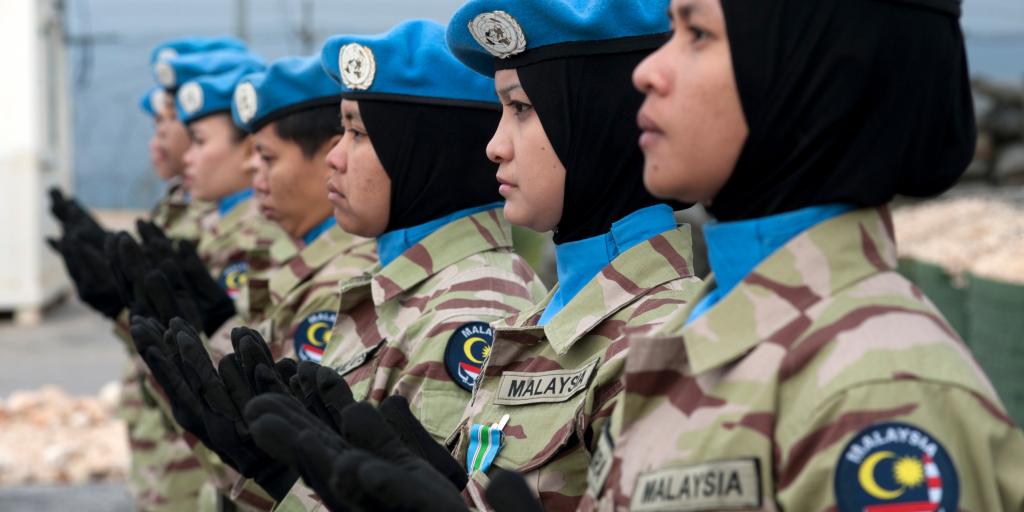Miriam Engeler
Master in Development Studies (2020), the Graduate Institute
miriam.engeler@graduateinstitute.ch
Marissa Fortune
Master in Development Studies (2020), the Graduate Institute
marissa.fortune@graduateinstitute.ch
Twenty years ago, on October 31st, 2000, the United Nations Security Council (UNSC) passed Resolution 1325 on Women, Peace and Security (WPS), launching a global policy agenda which over the past two decades has grown into a sprawling field of practice based on the initial resolution and nine subsequent UNSC resolutions.
The Women, Peace and Security Agenda addresses the gender dimension of peace and security through four pillars: increasing women’s participation in decision-making; protecting women from gender-based violence; including gender perspectives in the prevention of conflict; and addressing relief and recovery through a ‘gendered’ lens. The Agenda has rightfully been lauded as a significant achievement in recognizing and counteracting the gendered impacts of war and insecurity. Yet, the translation into international policymaking of what was originally a feminist and pacifist agenda, pushed for by civil society, has been the subject of significant scholarly critique. In particular, critical approaches to the WPS Agenda have argued that it co-opts feminist knowledges into neoliberal governing structures, fails to call militarism and colonialism into question, and leaves gendered power relations unchallenged.
Combining a review of scholarly criticism of the WPS Agenda with two examples of the Agenda’s implementation, we argue that the past 20 years of WPS have been defined by well-intentioned policies and practices which have tended to undermine their own stated feminist objectives in a variety of ways. To underline the academic critiques, we explore gender mainstreaming efforts in UN mediation and peacekeeping troop contributions to unpack how applying post-structuralist methodological perspectives to the WPS agenda can help salvage and redefine the next 20 years of its application in the global policy space.
In analyzing the ‘Women, Peace and Security’ policies at hand, we apply a poststructuralist perspective which departs from an understanding of policies as discursive practices that don’t address objective preexisting ‘problems’, but instead represent and delineate a problem in a certain way, with discursive, embodied and lived effects. Interrogating the way a policy ‘represents’ a problem allows insights into what assumptions – about women, gender, peace and security – underlie the problem representation, and what effects arise from this particular type of representation.
Counting and Adding Women to Mediation – But for What Reason?
Women as lead mediators in peace processes constitutes a policy issue at the intersection of two core problems that the WPS agenda originally aimed to address: the exclusion of women from formalized peacebuilding roles and the lack of women in high-ranking decision-making positions in peace and security. Examining the role of women as mediators in the WPS agenda therefore illustrates several conceptual shortcuts commonly taken in WPS policymaking and implementation.
The UN’s WPS policy documents and the efforts to incorporate gender dimensions into UN mediation activities show that the strategic frameworks for implementing the WPS Agenda conceptualize the promotion of women mediators primarily as measures to enhance the attention to women’s priorities in peace agreements and to act as representatives for other women. Women’s participation as mediators is also implicitly posited as having a range of other positive effects, such as enhancing organizational effectiveness and signaling inclusivity norms to conflict parties. At the same time, UN policies largely leave the highly masculinized structures and role models prevalent in mediation practice unquestioned, and still value an elite background, political gravitas and a capacity for securitized power-brokering as mediator qualities.
This conceptualization of women integrated into a peace process as automatically (and successfully) advocating for gender equality presupposes universal female solidarity and assumes that the integration of a few women into existing power structures will achieve overall progress for gender equality. Yet, while the promotion of women (usually from elite backgrounds such as national leadership or diplomacy) into senior mediation positions might in itself be a goal worth pursuing, positing it as an achievement for the representation of other women affected by a particular peace process applies a simplistic notion of women as a monolithic category with unitary ‘women’s interests’ and ignores differences of race, class, and power among women. Trying to solve both women’s underrepresentation in decision-making and the gender-blindness of peace processes and agreements by simply raising the numbers of high-ranking women does not kill two birds with one stone, but rather constitutes a dangerous conflation of women with gender, presence with advocacy and inclusion with influence.
Applying a critical poststructuralist methodology not only uncovers the assumptions lodged within the examined policies, but also the subjectivities created as a result of it. In this case, the designation of the woman mediator as a representative of a plethora of women at the same time both homogenizes women and separates the women mediator from other women by granting her power, voice and representative status that the ‘represented’ women are denied. Yet, while the woman mediator is expected to deliver transformative results such as rendering the mediation process more gender-sensitive, the subjectivities of mediators that arise from UN policies are still those that conform with masculinized structures of mediation practice. The woman mediator is therefore at the same time expected to fit in and transform, and to share characteristics and interests with other women but stand out from them by virtue of her position.
This is an excerpt. To read the full article, visit The Global.
Interested in contributing to our blog? Here is how.
Image credit: UN Photo


